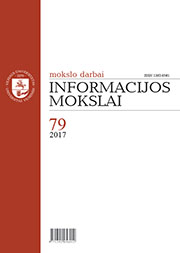On the methodology of evaluating the acceptance, use and suitability of personalized learning units
On the methodology of evaluating the acceptance, use and suitability of personalized learning units
Author(s): Eugenijus Kurilovas, Saulius Minkevičius, Julija Kurilova, Irina VinogradovaSubject(s): Education, Methodology and research technology, Evaluation research
Published by: Vilniaus Universiteto Leidykla
Keywords: learning styles; personalization; learning units; probabilistic suitability indexes; evaluation; UTAUT model;
Summary/Abstract: The aim of this paper is to present the methodology (i.e., the model and method) for evaluating the acceptance, use and suitability of personalized learning units/scenarios for particular students. Learning units/scenarios are referred to here as the methodological sequences of learning components (learning objects, learning activities and the learning environment). High-quality learning units should consist of learning components optimized for particular students in accordance with their personal needs, e.g., learning styles. In the paper, optimized learning units mean learning units composed of the elements having the highest probabilistic suitability indexes for particular students in accordance with the Felder-Silverman learning styles model. The personalized learning unit evaluation methodology, presented in the paper, is based on (1) the well-known principles of the Multiple Criteria Decision Analysis for identifying evaluation criteria; (2) the Educational Technology Acceptance & Satisfaction Model (ETAS-M) based on a well-known Unified Theory on Acceptance and Use of Technology (UTAUT) model and (3) probabilistic suitability indexes for identifying learning component suitability to the needs of particular students, all in accordance with their learning styles. The methodology for evaluating the acceptance, use and suitability of personalized learning units for particular students, which is presented in the paper, is absolutely new in scientific literature. In the paper, there are also examples of implementing the methodology using different weights of evaluation criteria. This methodology is applicable in real life situations, where teachers have to help students create and apply learning units that are most suitable for their needs and thus to improve education quality and efficiency
Journal: Informacijos mokslai
- Issue Year: 2017
- Issue No: 79
- Page Range: 44-57
- Page Count: 14
- Language: English

